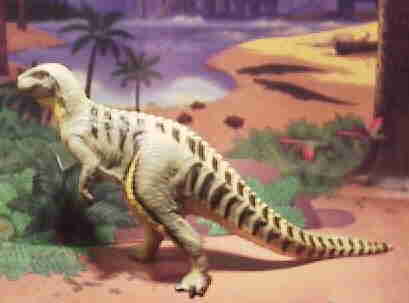Middle Jurassic
Bathonian Europe
Something changes at the end of the Early Jurassic. The continents move, the climate gets wetter. Giant sauropods replace the early sauropodomorphs. New large theropods replace the coelophysids and stegosaurs develop. Trees get taller and cycadoids are less important. Bathonian England had the theropod Megalosaurus and sauropod Cetiosaurus.
Updated 103012
The first periods of the Early Jurassic are the Aalenian and Bajocian when remains are rare. The following Bathonian period is only slightly better known. Megalosaurus has been described as a typical primitive tetanuran. It had a large head, with a short, strong, flexible neck, and a large strong tail flattened from side to side.

Megalosaurus is best known from Bathonian stage, of Europe (Southern England, France, Portugal) is not well know but is important as one of the first dinosaurs to be described. It is ironic only one other dinosaur fossil is known from this period. It had a length of 9 - 1- meters and an estimated weight of 2 - 3000 pounds. Originally it was seen as a precursor of Allosaurus from North America.

Proceratosaurus is a small, 10 feet long, theropod with a horn over the mid-line crest (or alternatively over the nose). It has an extremely narrow, lightlybuilt skull and heterodont teeth. Considered the oldest definite coelurosaur. It may have been a ceratosaurid, or,a close relative of Ornitholestes. The most recent evaluation indicates that it is the oldest tyrannosauroid.
Cetiosaurus the 50 foot Whale Lizard is one the oldest sauropods known. Cetiosaurus was an early sauropod that was primitive in some respects such as having a solid backbone instead of the more usual hollow bones. It was the first sauropod genus named.





